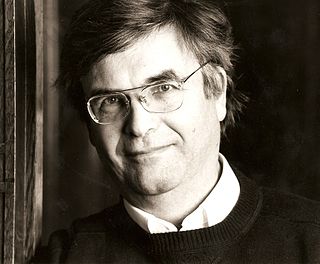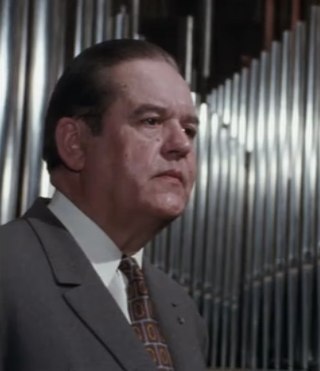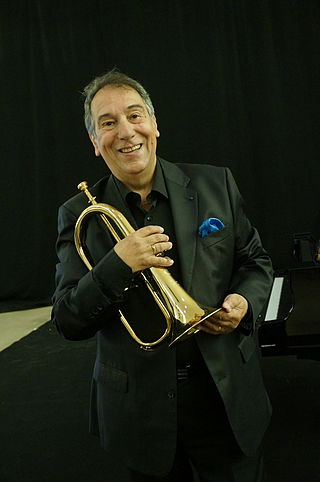
Joseph Guy Marie Ropartz was a French composer and conductor. His compositions included five symphonies, three violin sonatas, cello sonatas, six string quartets, a piano trio and string trio, stage works, a number of choral works and other music, often alluding to his Breton heritage. Ropartz also published poetry.

Gilles Tremblay, was a Canadian composer from Quebec.

Jean-Jacques Charles Grunenwald, also known by his pseudonym Jean Dalve, was a French organist, composer, architect, and pedagogue.

Claude Vivier was a Canadian composer, pianist, poet and ethnomusicologist of Québécois origin. After studying with Karlheinz Stockhausen in Cologne, Vivier became an innovative member of the "German Feedback" movement, a subset of what is now known as spectral music. He was also among the first composers in either Europe or the Americas to integrate elements of Balinese music and gamelan in his compositions, alongside Lou Harrison, John Cage and fellow Québécois Colin McPhee.
Désiré Louis Corneille Dondeyne was a French conductor, composer and teacher who was born in Laon in the Aisne département.

Jean-Claude Borelly is a French trumpeter and composer.

Paul de Senneville was a French composer and music producer.

Guy Touvron was a French classical trumpet player and music teacher. He was an accomplished soloist, having played with some of Europe's leading orchestras. He premiered several prominent trumpet concertos written for him. Touvron gave over 3,500 concerts, made over 120 recordings, and won several prizes.

Thierry Joseph-Louis Escaich is a French organist and composer.
Henry Muller was a French writer, journalist and book publisher. He began to work for the publishing house Grasset in 1923 and ended his publishing career as Grasset's secretary-general. He recounted his memories from Grasset and interwar France in the books Trois pas en arrière and Six pas en arrière. He received the 1960 Prix Interallié for the novel Clem.

Siddhartha is an orchestral suite by Canadian composer Claude Vivier, which was completed in 1976.
"Shiraz" is a virtuosic piano piece by Claude Vivier, written in 1977. It is named after the eponymous Iranian city, and contains a flurry of interlocking rhythmic combinations and pulses at great speed. Vivier was inspired to write the piece after listening to blind singers perform in the city's market square. He wrote in the piece's program notes how he found Shiraz to be, "a pearl of a city, a diamond vigorously cut."
Lonely Child is a piece for soprano and orchestra by Claude Vivier, written in 1980. It is arguably his most well-known piece, and is considered a hallmark composition in the genre of spectral music.
Kopernikus is a 1979 opera in two acts by Canadian composer Claude Vivier, inspired by the astronomer of the same name. It is the only opera of three that Vivier completed prior to his death in 1983. A typical performance lasts around seventy minutes.

Zipangu is a 1980 work for string orchestra by Canadian composer Claude Vivier. Inspired by traditional kabuki theatre, it is considered by many to be the composer's most aggressive and "unforgiving" piece, as it features a plethora of extended techniques for strings and denser harmonic content atop a complex melody, similar to the string compositions of Krzysztof Penderecki. A typical performance lasts around sixteen minutes.
Bouchara is a 1981 work for mixed chamber ensemble by Canadian composer Claude Vivier. It was originally intended to serve as an interlude for his unfinished opera Rêves d'un Marco Polo (1983-), but was published independently of the opera after weeks of deliberation. A typical performance lasts around twelve minutes.
Canadian composer Claude Vivier (1948–83) wrote four extant pieces for the tape recorder, in the musique concrète tradition established by French composer Pierre Schaeffer in the 1940s. Multiple other pieces from his career include the tape machine being used as an additional instrument to various ensembles. The majority of these compositions were a result of Vivier studying with Gottfried Michael Koenig at the Institute for Sonology in Utrecht.
Cinq chansons pour percussion is a 1980 work for solo percussionist by Canadian composer Claude Vivier. It is an example of an extended American gamelan, featuring a very large array of percussion instruments that include gongs and bells from Chinese, Japanese, Indonesian and Thai origin.
Glaubst du an die Unsterblichkeit der Seele? is an unfinished 1983 chamber piece by Canadian composer Claude Vivier. It is one of his most famous compositions, as the libretto is claimed by some to have predicted the composer's own murder in March of the same year. The piece was left incomplete and unrevised with just three short movements, a typical performance lasting around eight minutes.
Et je reverrai cette ville étrange is a 1981 work for chamber ensemble by Canadian composer Claude Vivier. It is an extreme manifestation of monody, with all instruments playing in unison with a continuous melodic line throughout the piece. Musicologists generally view this piece as one of the apexes of his timbral concept, jeux de couleurs.










